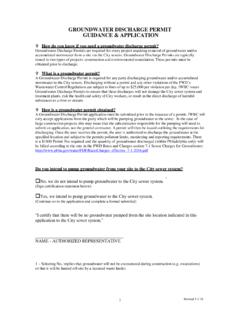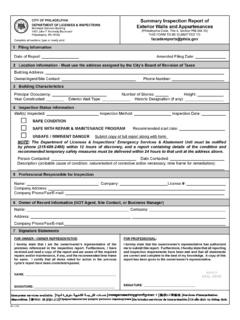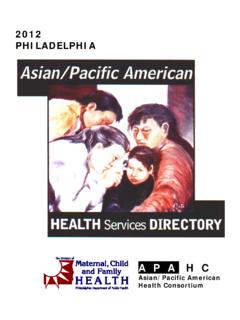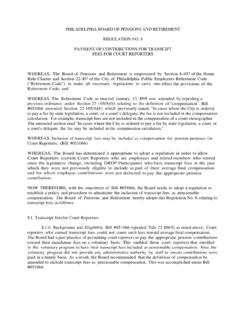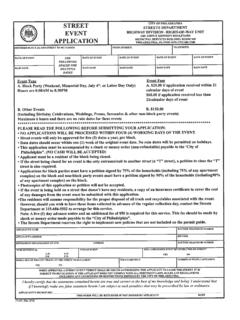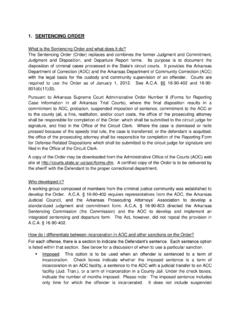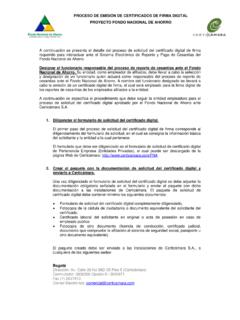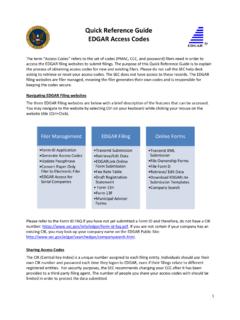Transcription of FREQUENTLY ASED QUESTIONS: Cross Connection …
1 F R E Q U E N T LY A S K E D Q U E S T I O N S : Cross Connection control What is a drinking water Cross Connection ? A Cross Connection is an improper and illegal plumbing arrangement between a potable and non-potable water supply. This Connection , under certain hydraulic conditions, can lead to a dangerous backflow from a contaminated water system to drinking water. What is backflow and how does it occur? Backflow is the flow of water or other substances through a Cross Connection into the distribution pipes of a potable water supply. Backflow can occur when: Elevated pressure in the downstream piping system caused by pumping, elevation of piping, steam pressure or air pressure exceeds the pressure in the supply piping.
2 This is called backpressure. Reduced or negative supply pressure is below atmospheric pressure. This is called backsiphonage. (For example, higher demand in the city's water distribution system due to a main break, firefighting or hydrant abuse). Why is the City of Philadelphia concerned with improper Cross connections? The quality of Philadelphia's drinking water supply could be compromised if backflow from a non-potable supply containing hazardous substances occurs. The City of Philadelphia has Cross Connection control Regulations to protect the public health and the integrity of its drinking water supply.
3 Who enforces the drinking water Cross Connection control regulations in Philadelphia? Philadelphia Water Department (PWD) and the Department of Licenses and Inspection (L&I) and the Philadelphia Department of Public Health (PDPH) share responsibilities for Cross Connection control . Operational jurisdictions are divided into two functional areas; containment and elimination. PWD maintains a policy of containment to protect the public water supply from Cross Connection hazards. The goal of the policy is to prevent any backflow originating from a building from getting into the City's water mains. L&I and PDPH each practice a policy of elimination to address Cross Connection problems within a facility's plumbing, which is done through the permitting and inspection processes.
4 FAQs continue on next page 1. F R E Q U E N T LY A S K E D Q U E S T I O N S : Cross Connection control What is the Water Department's Containment Policy? PWD containment guidelines were established in 1975 and became a policy in 1978. This policy (Regulation 403). requires approved backflow prevention on all properties which have actual or potential Cross connections. This includes, but is not limited to, all commercial, industrial and institutional facilities, multifamily buildings and any single family residence where deemed necessary. PWD requires the installation of either approved mechanical devices or an air-gap separation after the meter Connection .
5 Approved mechanical backflow prevention devices are: Reduced pressure assembly (RP). Double check assembly (DC). A list of City approved devices by manufacturer, model number and size is available from the PWD Cross Connection control webpage: Only City approved devices must be used. PWD determines whether DC or RP devices are the type of protection required for a given application, based on the degree of hazard. Guidelines are established in PWD's Cross Connection control Manual. In general, an RP is required on the domestic service line in all applicable situations. Furthermore, PWD generally allows a DC on all fire sprinkler service lines which do not contain antifreeze or other chemicals.
6 In brief, what are the City's Cross Connection control Regulations? The regulations require: The installation of a City approved backflow assembly at all domestic and fire service connections by a City certified backflow prevention technician. Testing of newly installed backflow assemblies before operation by a City certified backflow prevention technician. Annual testing of each containment assembly and routine maintenance by a City certified backflow prevention technician is required to ensure maximum operating performance. Submission of all test results to PWD's Industrial Waste and Backflow Compliance (IWBC) Unit at: 9001 State Road, Philadelphia, PA 19136.
7 What is the Backflow Testing Requirement? In summary: All containment devices (DC and RP assemblies) shall be tested and maintained to ensure continued reliability. Tests shall be done immediately upon installation, immediately after each repair and annually thereafter All reports on the testing of backflow assemblies (giving pertinent test data and any repairs made), are to be documented using the Backflow Prevention Assembly Test and Maintenance Record (Form 79-770). Test results shall be sent within 48 hours of completion. All assemblies failing to meet the PWD performance standards shall be repaired or replaced and retested within fourteen (14) days from the initial test.
8 The only acceptable test procedures are those that are listed in Section of the PWD Cross Connection control Manual. FAQs continue on next page 2. F R E Q U E N T LY A S K E D Q U E S T I O N S : Cross Connection control Who offers Backflow Prevention Certification and Training? Currently, the New England Water Works Association (NEWWA) and the American Society of Sanitary Engineering (ASSE), offer backflow certification and training courses that are recognized by PWD. For attendance at those courses, applicants should contact the respective organizations directly. To become a certified backflow prevention technician in the City of Philadelphia one must have either a City Master Plumbers License or a City Fire Suppression Contractor License, together with backflow certification from one of the organizations listed above.
9 Persons that satisfy these requirements can apply to be a City Certified Backflow Technician by contacting the Industrial Waste & Backflow Compliance Unit. Approved applicants are placed on the respective backflow technician lists found on the Cross Connection control Program webpage: How will the Cross Connection control Regulations be enforced? A permit (form CP-100) must be obtained by a City Certified Backflow Technician from L&I for any containment backflow assembly installed on a City water service Connection . The permit indicates that the type of backflow protection to be installed is consistent with PWD requirements.
10 It also indicates that the person(s) applying to do the work is on the list of approved backflow prevention technicians. The permit information is available to PWD. Backflow Compliance staff. Only City Certified Backflow Technicians are able to apply for backflow permits. Initial Testing is required at the time a new backflow assembly is installed or when an existing assembly is replaced, annually thereafter, or whenever failure is suspected. Testing requirements are enforced by the PWD Industrial Waste & Backflow Compliance Unit as it reviews and updates existing accounts. Backflow Compliance will issue notices to accounts that do not comply with the Cross Connection regulations as a prelude to further enforcement action.
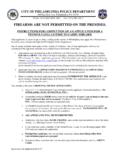
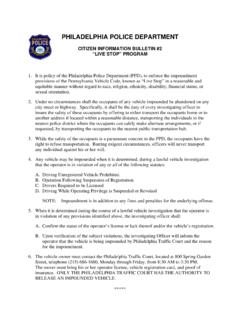
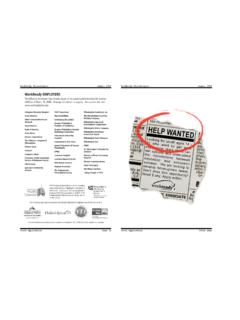
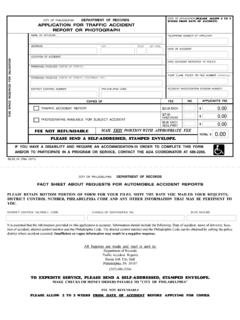
![[PSA] Philly: Classaction lawsuit brings changes in …](/cache/preview/1/4/c/8/8/d/5/c/thumb-14c88d5c5b2f1fee5e561fc7daceb397.jpg)
